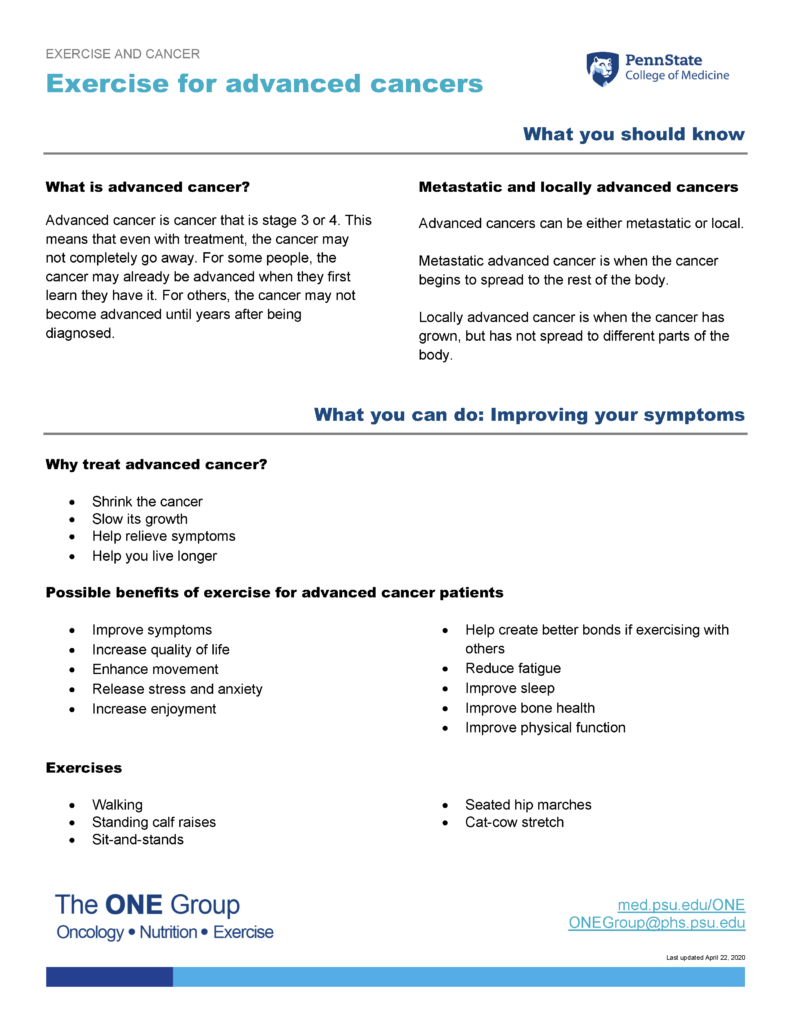Learn about exercise for advanced cancers in this guide from The ONE Group (Oncology – Nutrition – Exercise) at Penn State College of Medicine.
Jump to topic
Search
What you should know
What is advanced cancer?
Advanced cancer is cancer that is stage 3 or 4.
This means that even with treatment, the cancer may not completely go away.
For some people, the cancer may already be advanced when they first learn they have it.
For others, the cancer may not become advanced until years after being diagnosed.
Metastatic and locally advanced cancers
Advanced cancers can be either metastatic or local.
Metastatic advanced cancer is when the cancer begins to spread to the rest of the body.
Locally advanced cancer is when the cancer has grown, but has not spread to different parts of the body.
What you can do: Improving your symptoms
Why treat advanced cancer?
- Shrink the cancer
- Slow its growth
- Help relieve symptoms
- Help you live longer
Possible benefits of exercise for advanced cancer patients
- Improve symptoms
- Increase quality of life
- Enhance movement
- Release stress and anxiety
- Increase enjoyment
- Help create better bonds if exercising with others
- Reduce fatigue
- Improve sleep
- Improve bone health
- Improve physical function
Exercises
- Walking
- Standing calf raises
- Sit-and-stands
- Seated hip marches
- Cat-cow stretch
How to do seated hip marches
Try 10 of each per leg; rest, then repeat. You can do these every day.
Step 1: Sit in a chair with your feet shoulder-width apart.
Step 2: Hold the edges of the armrest.
Step 3: With your knee bent, lift your right leg up.
Step 4: Put your right leg back on the floor.
Step 5: Repeat with opposite leg.
How to do sit-and-stands
Try 10 of these; rest, then repeat. You can do these every day.
Step 1: Start by sitting in a chair.
Step 2: Without using your hands for support, stand up.
Step 3: Sit back down.
Step 4: Repeat.
Where can I find more information about aerobic and strength-training exercises?
If you are interested in starting aerobic and/or strength-training exercises, The ONE Group (Oncology – Nutrition – Exercise) provides videos demonstrating proper form for more than 50 exercises.
Notes
Contact your physician if:
- You begin to feel pain when exercising.
- You are dizzy or pass out while exercising.
- You fall while exercising.
References
- American Cancer Society
- National Cancer Institute

